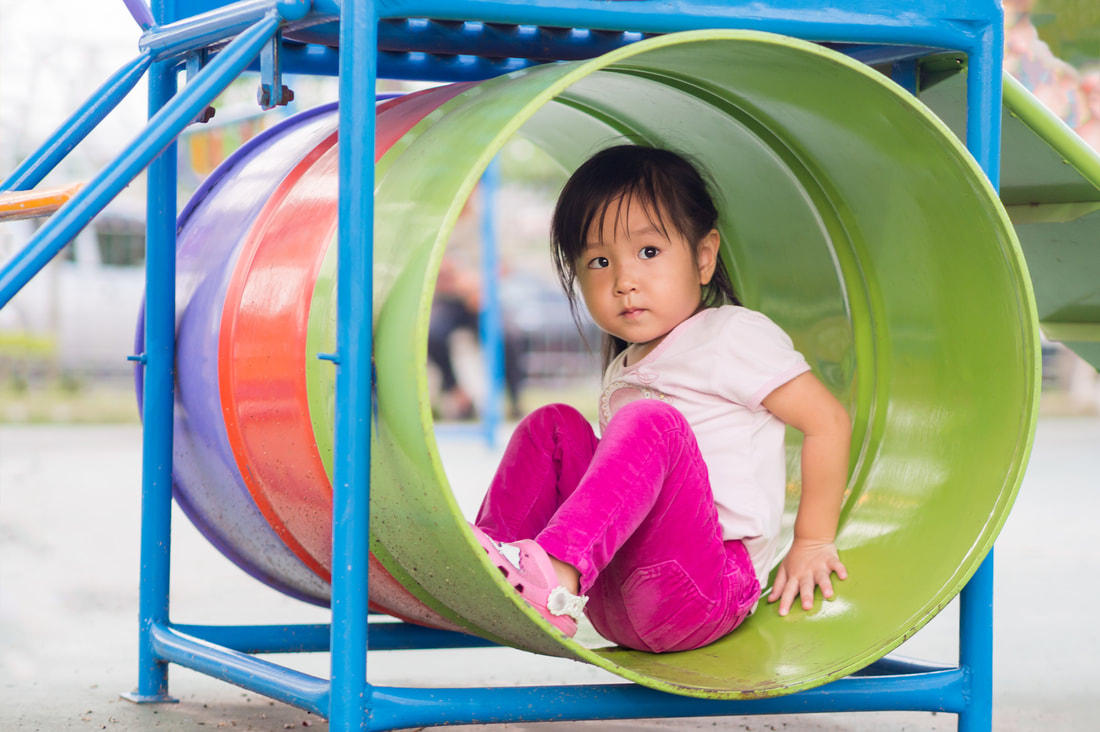Outdoor Active Play |
Page 11 |
Children should participate in outdoor active play two or more times a day. Outdoor environments are natural settings for physical activity. In fact, a lot of us may be more likely to associate physical activity with being outdoors. Think about times when you took a walk or a run in your neighborhood, when you walked, hiked, or played games in a park, when you explored a nature trail, or when you spent time gardening or cleaning up your backyard. Those activities probably made you feel good, energized, and even rejuvenated.
|
Children learn through active, hands-on experience – playing, exploring, experimenting and discovering. For example, long before very young children begin to form speech, they soak in the sights and sounds around them that are essential to their language development. It is known that the more time children spend outdoors, the more physical activity they get. Being outside gives children more space to move around on their own and to play with other children, leading to both physical and social development. Most weather conditions are safe for children to be outside, so there are opportunities for outdoor active play almost every day.
|
Ways to support active play outdoors in your program:
- Most weather conditions are fine for children to be outdoors. Weather conditions that pose a risk to children’s health and safety include:
o Wind-chill at or below 15°F,
o Heat index at or above 90°F,
o Air quality defined as a threat by local health authorities or through ozone (smog) alerts.
- You should be flexible to adjust the usual outdoor time if needed.
- Use a variety of places for outdoor play, such as a park or elementary school playground.
- Tell parents about your policy for outdoor play and weather conditions.
- Encourage parents to provide proper clothing for weather conditions.
Try some of these ideas when engaging children in outdoor physical activities.
Remember that the outdoors can provide numerous opportunities for you to watch children play and gather information about their development.
- Provide a variety of fun activities, such as riding tricycles, playing tag, scavenger hunt games, balancing games, changing direction games, obstacle course, follow the leader, dancing, freeze tag, or parachute games.
- Encourage children to work together to create their own games and activities.
- Include sensory experiences for children outside. Encourage children to explore nature around them, the different colors, textures, or shapes of things they see outside.
- Model enjoyment for physical activity outdoors by joining children in play, running, dancing, games, or other activities.
Active playtime should not be withheld when children exhibit mistaken behavior. Additional active playtime should be offered for appropriate behavior.
Limiting a child’s active playtime as punishment supports inactivity and could lead to long-term negative attitudes or feelings toward active play. Children will learn to connect physical activity not with a healthy lifestyle or fun, but rather with being bad. Punishment through physical activity restriction can increase the risk of overweight and associated health problems in childhood as well as later in life. Oftentimes, children become disruptive when they have extra energy. Limiting physical activity may then only worsen behavior rather than allow the children to use pent-up energy.


